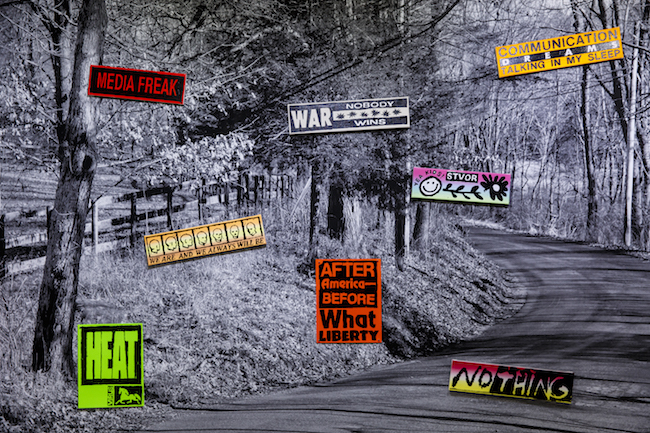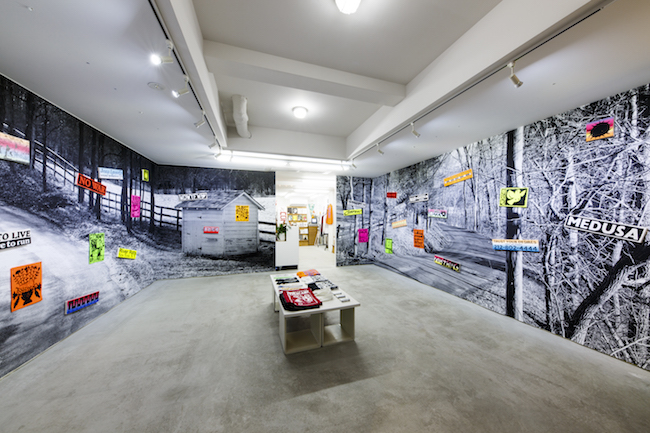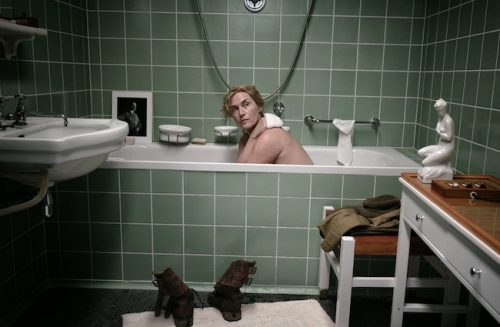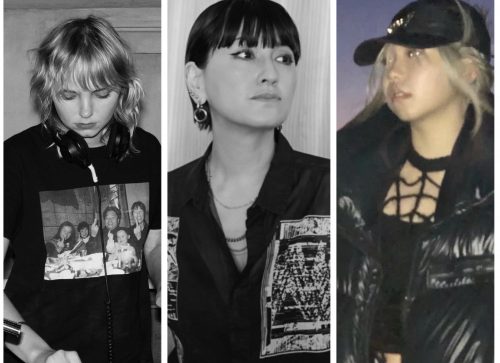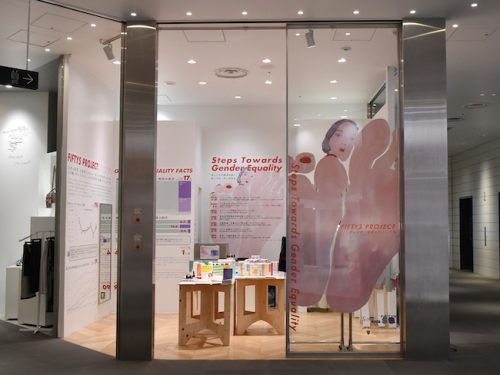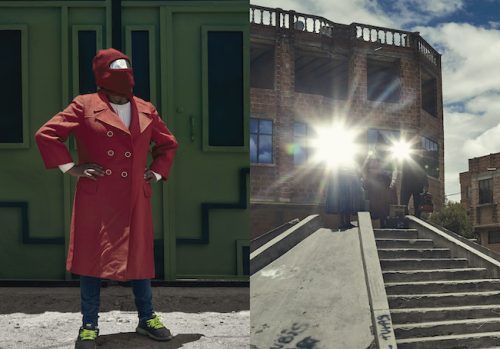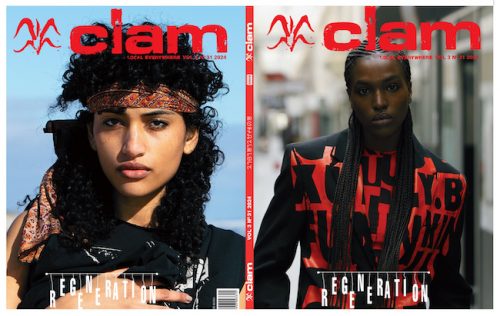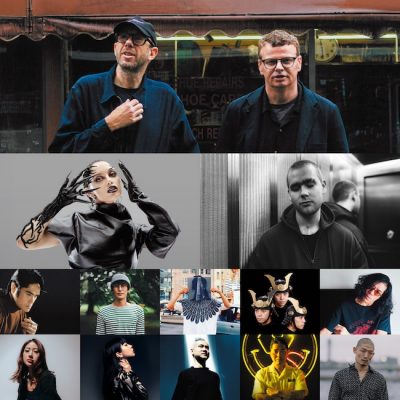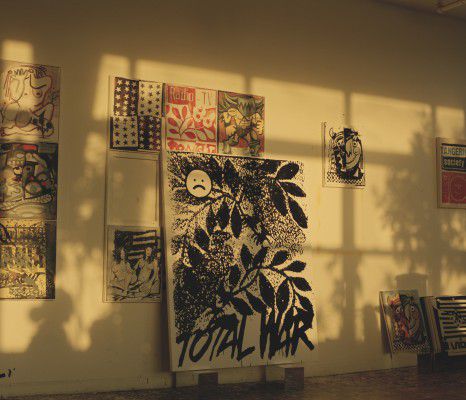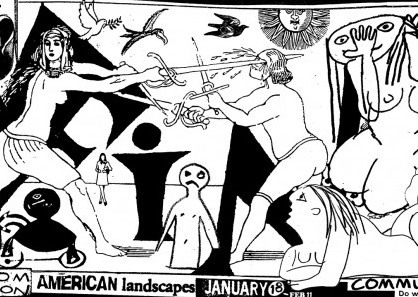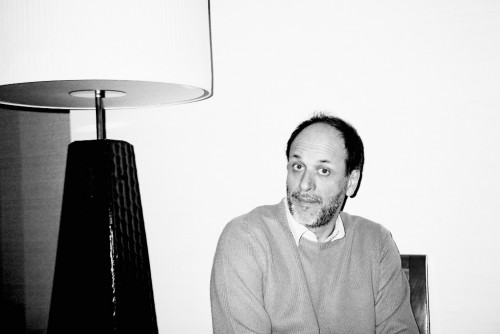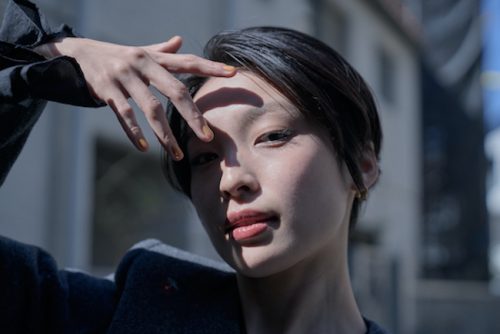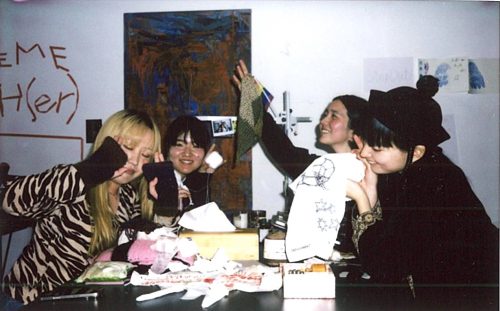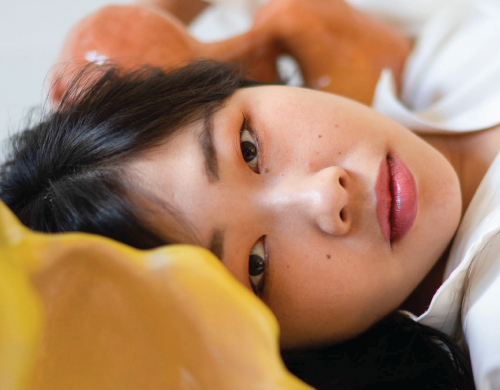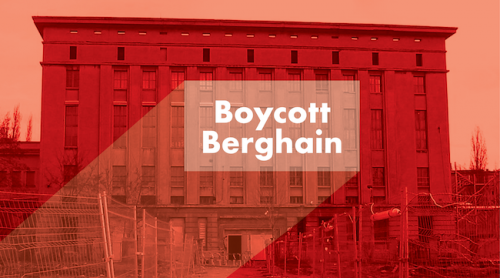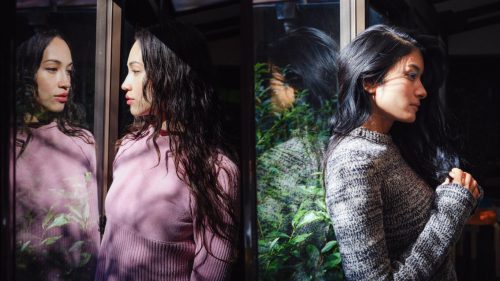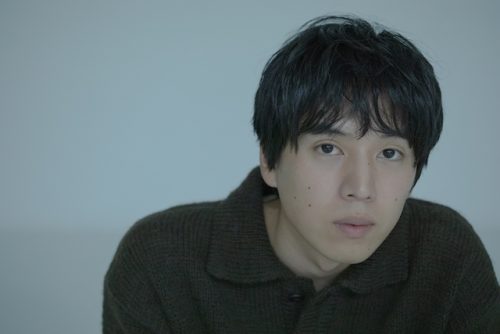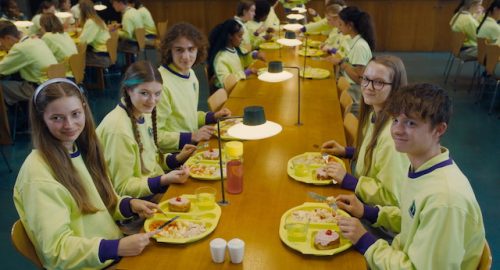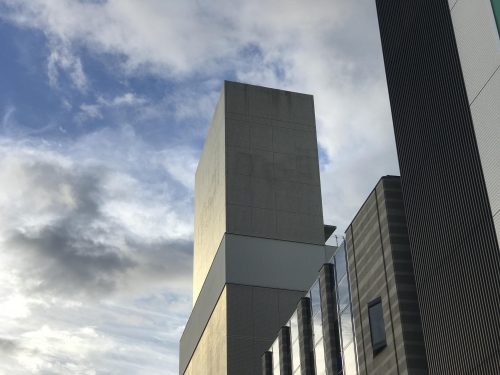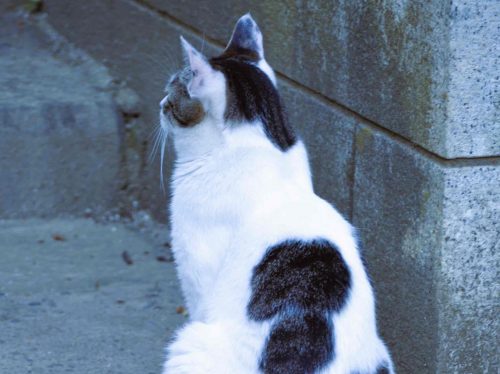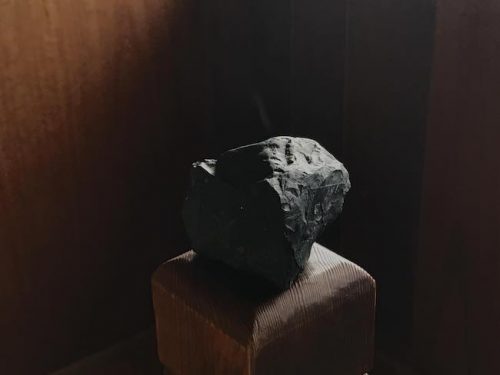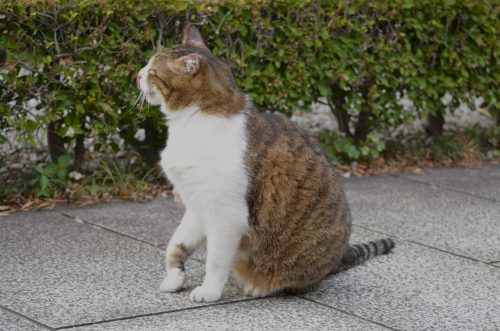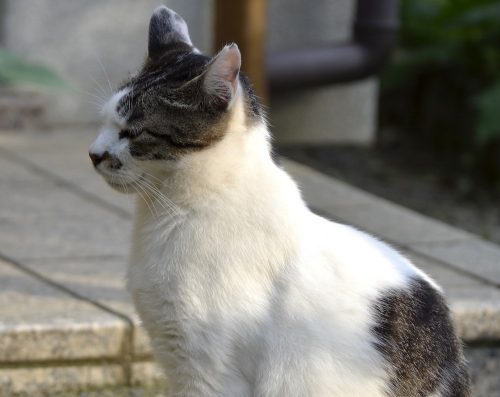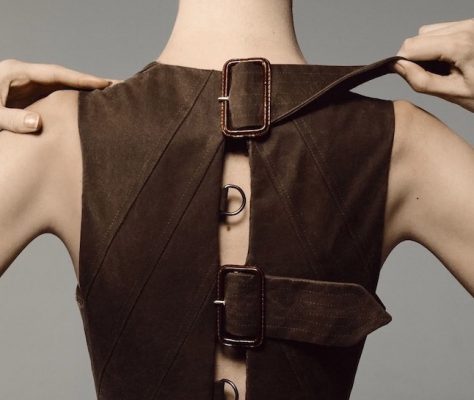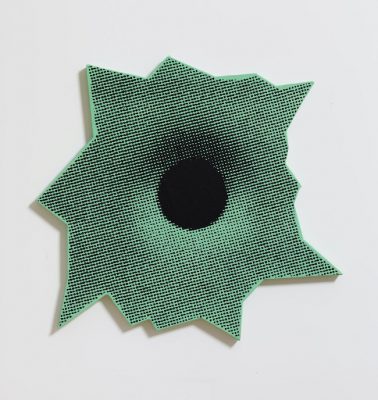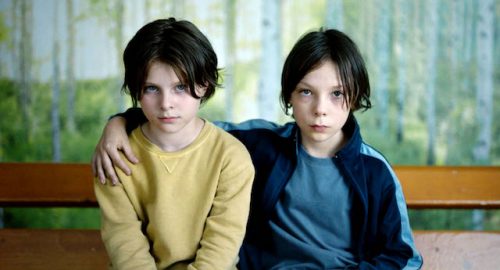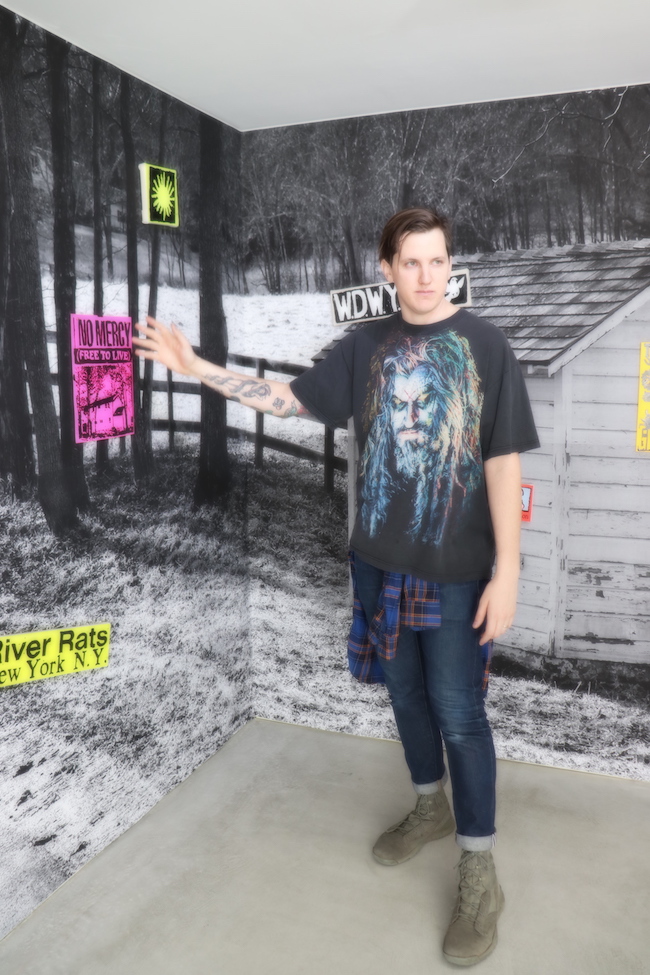
JUNYA WATANABE コム デ ギャルソンやBRAIN DEAD へのビジュアル提供などで注目を集めるアメリカのアーティスト B.Thom Stevenson の展示『American Landscapes』を1/18(金)~2/11(月/祝)の期間、幡ヶ谷 gallery commune で開催。展示に合わせて来日したB.Thomにクリエイティヴソースやものの見方について話を聞いた。
ーまず、作品のアイデアについて聞かせてください。
B.Thom「自然主義的な絵が今どういう意味をもたらすかを探っているんだ。自分たちが西洋の風景をどう抽象化してきたかを覗いて、風景画の西洋のアイデアを抽象化しているんだ。まさに“じっくり覗いている”状態と言えるね。僕はこれらの風景画がズームインされ、バンパーステッカーが貼られた車が田舎の山道を時速140キロで走る様を想像するのが好きなんだ。車のバンパーステッカーとは本来、そういうアメリカの風景画の中に要約されたものがグラフィック化したものだからね」
ー作品に関してはどんな解釈も受け入れていて観客にも参加してほしいと言っていましたが、自分と観客の間での「コミュニケーション」と「解釈」の違いはどう定義づけているのですか?
B.Thom「絵としての役割とグラフィックコミュニケーションやグラフィックデザインとしての役割ではかなりルールが異なる。デザインの場合、すぐに伝わる分かりやすいメッセージをポスターにして作ることが多い。グラフィックデザインは5つのW’s:Who (誰)、What (何)、When (いつ)、Where (どこで)、Why (なぜ) を伝えるもの。絵は一つを選んで曲げたり気持ちを込めたりして個人のスタイルを加え、“ビッグアイデア”の視覚的な表現を作っていく。ルールが少ないと同時に、たくさんの表現がある。一般的にいうならば個人的な知覚の抽象化だね。観客は自分自身さ。僕らは人間として二つを区別して理解し、認識するようにと教わったんだ。自分たちの中で一瞬で、“これはポスターだ。何か私にメッセージが伝えられているんだ”とか、“これは絵だからもっと深い意味を抽象化したものだろう”と考えてしまう。僕は二つの混ざり合いを探っているよ。コミュニケーションに対する超現実主義的な考えだよ。言語という形をテンプレートのように使い、コミュニケーションを物理表現し、自分にとっての意味は自分の中で留めているんだ。観客に自分で意味を見つけてほしいから」
ー視点を元の文脈から外しているということですか?
B.Thom「そうかもしれない。僕から単にメッセージを与えているだけではない、ということだね。ただ心地いいで終わってしまわない程度の内容と文脈を観客に与え、彼らがそれについて考えられるようにしているんだ。例えば、新聞を読むとき僕の場合は先に絵に目がいき、次は絵の下の説明文、そして記事の見出し、最後に記事の内容(最終的な話が載っている場所…そうでない時もあるけど)となる。多くの人はこの順番で読むよね。新しい情報を取り込む時にヴィジュアルから見るのは本能なんだよ。僕はその新聞の記事と説明文、時には写真の一部も抜き、大きなストーリーから切り取ったわずかな部分を残しているんだ」
——Would you talk to us about the idea of the work?
B: I am exploring naturalistic painting, and what that means NOW. I am abstracting the western idea of the landscape painting by examining how we have abstracted the western landscape. I am literally taking a “closer look”. I like to imagine these paintings are a zoomed in and cropped image of a bumper of a car traversing a hilly countryside going 90 miles per hour. That’s what bumper stickers really are, a boiled down, graphic representation of the American landscape.
——You were saying that your work is open to all sorts of interpretation of the audience as they engage themselves with it, so how would you define the difference between “communication” and “interpretation” between the audience and you, through the work.
B: There are vastly different rules between the objectives of painting and the objective of graphic communication or graphic design. Usually in design one would make a poster to communicate an immediate clear message. Graphic design communicates the “five W’s”; who, what, when, where, why. Painting chooses one and warps it and adds feeling and personal style to create a visual representation of the BIG IDEA. There are, at the same time, far less rules and many many more, but generally it deals with the abstraction of perception through a personal scope. The audience is oneself. We have been trained as humans to understand and recognize the difference between the two. Internally and immediately we think “oh, this is a poster. It is a message being spoken to me” or “that’s a painting, so it is an abstract representation of a deeper message”. I am exploring the blending of the two. A surrealist approach to communication. I am using the format of language, almost like a template and a physical representation of communication, but I am keeping my meaning to myself, so the viewer, YOU, can decide their own for themselves.
——Would you say that you are taking things out of their context?
B: Maybe. What I would say is that I am not spoon feeding a message. I am providing enough information and context to give the viewer something to hang on to without getting comfortable. For example; when I read the newspaper, my eyes go to the pictures first, then the caption below the image, then the headline of the article, then the article itself, where you get the (arguably) complete story. Most people do it in this order. It’s an evolutionary instinct to visually orient yourself when provided with new information. I am removing the article, and the caption below the image and sometimes part of the image, and leaving the viewer with small morsels of a larger story.
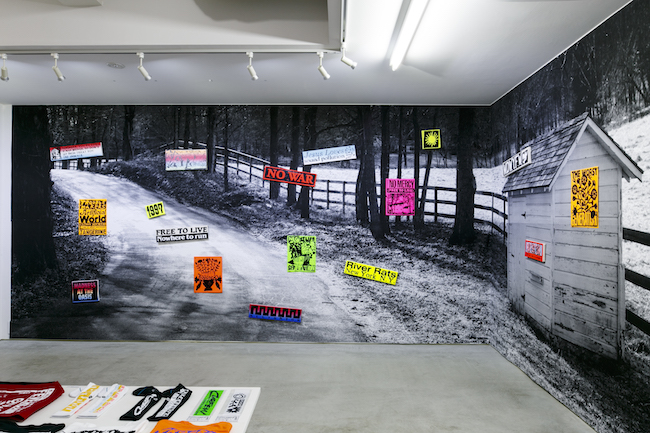
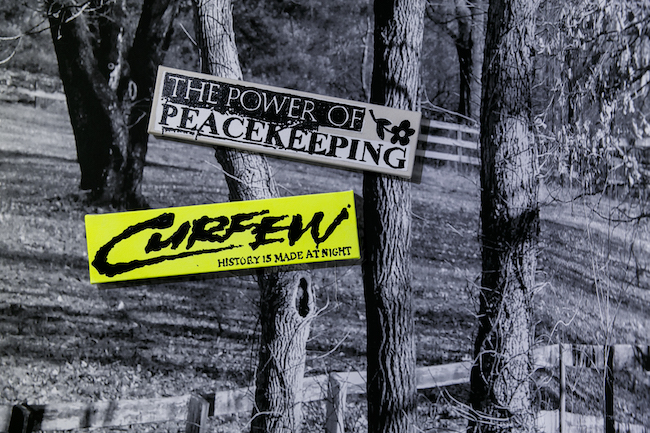
ーご自身では作品を見る度に違う解釈をしていますか? そもそも正しい解釈はあるんですか?
B.Thom「いや。これらの作品はヴィジュアルポエトリーに近いものだと思う。僕にとってはとてもパーソナルな意味を持っているんだ。でも誰も僕の人生を生きたことがないし、僕の目からの視点を味わったこともない。だから、気持ちとアイデアのコミュニケーションを表現した作品なんだ」
ーギャラリーに入った人々はまず自然風景の写真(壁紙)に囲まれ、いつのまにかそれに魅了されている自分に気づきます。それも一つの狙いだったんですか?
B.Thom「何か体験を与えるインスタレーションを創るのが目的だったんだ。日本に来る少し前、この展示のためにニューヨーク北部で壁紙に使う写真を撮影してきたんだよ。観客にとって新しい世界を作りたくて。周囲を抽象化させるためにね」
ーなるほど。制作過程についてですが、普段はどのように始めていますか? 写真コラージュのような感じでしょうか?
B.Thom「作品によって毎回違うよ。大量にドローイングをして大量に本を読む。たまにコピー機を使って自分の絵と見つけた言葉を並べてみることもある。朝起きてイメージや言葉が思い浮かぶ時もあって、紙に書き留めたり。昔から夢をよく見て、寝言を言っていることも多いんだ。若い頃は頭痛がひどく、夜は寝ながら歩き出すような悪夢も見ていた。“NIGHT TERRORS”と名付けていたんだけど、完全に寝ているのに寝ながら家を歩き回り、アブストラクトな世界にいる夢を見ていたんだよ。こんなことはもうないけど、今でもかなり鮮明な夢を見ることが多い。今朝は“ビジネス:時間は潜在的な管理人”と言いながら起きて、どういう意味かは全くわからないけどなんとなく気に入ってるよ(笑)」
——Do you personally interpret the work differently every time you see it? Is there a “correct” way to understand it?
B: No, I think they are more like visual poetry. To me it has a very personal meaning, but no one has lived my life or sees through my eyes. They are about the communication of feelings and ideas.
——And when everyone walks in and sees the natural background, they find themselves attracted to it. Was that part of the purpose, too?
B: My objective was to create an environment, an immersive installation. I took the photos that I used as “wall paper” for the show in upstate New York, not too long before I traveled to Japan for this show. I wanted to create a different world for the viewer. I wanted to abstract the peripheral.
——Would you tell us more about the process? How do you usually get started with the work? Would you consider them as photo collages?
B: It is really different each time, in each work. I do a lot of drawings and look at a lot of books. Sometimes I use my Xerox to juxtapose one of my drawings with found phrases. Sometimes I just wake up with an image or a phrase in my head and write it down. I talk in my sleep and have always been a very vivid dreamer. I had intense migraines when I was younger and these would be followed by sleep walking night mares called NIGHT TERRORS. I would be completely asleep but would walk around the house dreaming that I was in complete abstract worlds and scenarios. This doesn’t happen anymore but I still have strong dreams. This morning I woke up saying “Business; Time is the Latent Janitor” I have no idea what that means and don’t remember what the dream was about but that saying stuck with me.
ー解釈に関して、誤解されることへの不安はありますか? アジアの人達にとってはあなたの素材や課題がもの珍しく感じることもあると思います。
B.Thom「コミュニケーションにおいて“誤解”なんて存在しないと思うよ。投影に関してのテストのように、インクの出具合を確かめるみたいに、僕はそれらを模索しているんだ。願わくば、楽しい鏡の中に入ったような、そんな役割を持つ作品であってほしい。僕自身のことより観客について語る作品になってほしいね」
ーそのようなものを作ることがアーティストの責任だと思いますか?
B.Thom「何かを伝えるのがアーティストの責任だとは思わないよ。たぶんそれはアーティストの本能かも。必然的というか。何か作品を提示した瞬間に意味はつけられる。もちろんそれぞれのアーティストによってもどのように考えているかは違う。僕にとってアーティストでいる魅力は、それほど“伝える責任”がないことかな。公共の場に作品を置くと、見る人に責任が移る。でも最近は特に自分で意味を見つけたり、考えることをせず、作品を見てただ写真を撮って去っていく人が多い。アートの“ことば”はどこに行ってしまったのか…。作品は即座にチェックされているような感じで、作品を一目見てコンセプチュアルと感じられなかったら、コンセプチュアルアートでないと判断されてしまう。このSNS的な、一瞬で注意を惹かなければならないような流れは当分変わることはないだろうから、僕はアーティストとしてそのマスな視点を悪用していこうと思っている」
ー素晴らしいですね。最後に、東京の展示後の予定を聞かせてください。
B.Thom「ニューヨークに戻ったら絵をたくさん描いて11月にドイツで開くショーの準備をするよ。結構早目に作業に取り掛かる方なんだけど、細かなところは時間がかかるんだ。だから帰ったらスケッチを始める。きっといいものになると思うよ」
——Would “misinterpretation” be your concern since people who live in Asia might not be familiar with your subject and materials as they are very foreign?
B: I don’t think there is such thing as “misinterpretation” when it comes this form of communication. That is what I am exploring, it is a projective test. Like an ink blot. My work is to function as a fun house mirror. The work should say more about the audience than me.
——Would you agree that it is the responsibility as an artist?
B: I don’t think it is the responsibility of the artist to communicate. Maybe it is the artist’s instinct. It’s inevitable. As soon you put a work out there, there is a meaning to it. Also every artist is different. I think part of the appeal of being an artist is there is not that much responsibility to communicate. When you put art in a public space, I think the responsibility is the viewers. Especially today, in a time where people take a picture on their cell phone and walk away instead of taking the responsibility of interpreting the work and formulating explanations or meaning for themselves. The language of art today has been warped. If upon immediate inspection, if a work doesn’t look conceptual, it isn’t conceptual. This social media short attention span momentum won’t be changed overnight so as an artist I exploit this mass perception.
——That is really impressive. Do you have any plans after this show in Tokyo?
B: When I go back to New York I am gonna do some drawings and I have a show coming up in Germany in November. So I’ll start warming up for that. I work kind of fast but details take time, too. So I will start drawing when I get back. Should be good.
——That sounds very exciting! Thank you so much for the answers and I wish you good luck with your artistic pursuits.
B: Thank you!
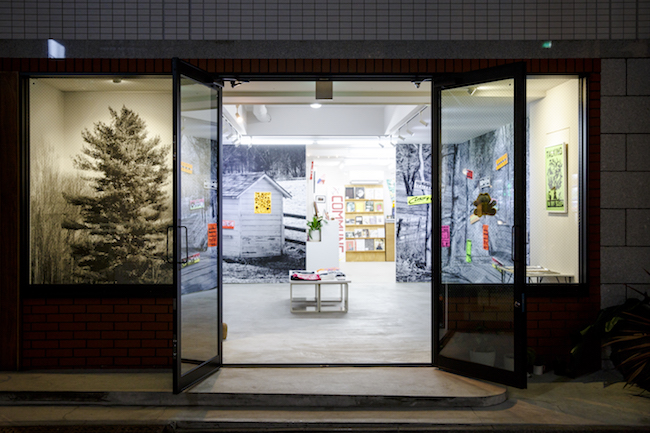
photography Baihe Sun(portrait) / Keisuke Tanigawa(Still)
text Baihe Sun / Karin Horikoshi
edit Ryoko Kuwahara
B.Thom Stevenson | B.トム スティーヴンソン
ドローイング、ペインティング、彫刻、インスタレーション、パフォーマンスで表現するニューヨーク 在住のアーティスト。主にフライヤー、DIYカルチャー、カルトホラー映画、ヴィンテージキルト、石の彫刻などニッチながらどこにでもある要素からサンプリングし、リワークを経て新たなイメージへと昇華させた作品を発表している。近年ではJUNYA WATANABE コム デ ギャルソンやBRAIN DEAD、 Silent Sound、STANCE、The Good Companyなどのブランドにヴィジュアルを提供、アーティスト CL とのコラボレーションワークやジョーダンブランドとパリ・サンジェルマンFCのNIKEキックオフイベントでのディスプレイ、エルメス ラスベガス店のショーウインドウも手がけた。これまでMoMA (New York)、Various Small Fires (Los Angeles)、V1 (Copenhagen)、Steinsland Berliner (Stockholm) など各国で゙展示を開催している。
http://www.instagram.com/bthomstevenson
取材協力
commune / commune Press
東京都渋谷区西原1-18-7
http://www.ccommunee.com
